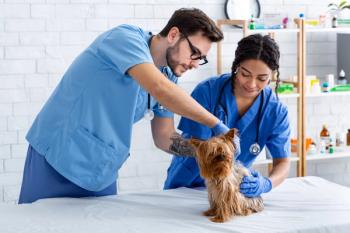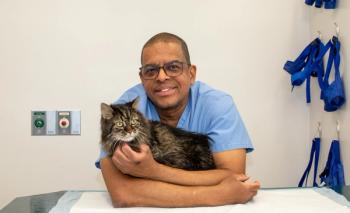
Female breeding soundness examination (Proceedings)
A technician's guide to examining female breeding soundness.
History
The time spent on history taking is the most important time devoted to a case.
Clinical examination of the bitch
- Complete physical should be performed to identify disorders of non-reproductive systems.
- Palpation of uterus - ultrasonographic examination or radiographs
- Inspect vulvar conformation.
- Vaginal
o Digital
o Speculum
- Examination of the mammary chain by palpation
- Brucella canis serology test
o Screening test
o Titer
- Thyroid testing should be performed in all dogs presented for infertility.
Vaginal cytology
- Clinical Uses
o To estimate progression toward first day of estrus in bitch that is being shipped for breeding
o To correlate endocrinological and behavioral states in the bitch that has been subfertile
o To determine infectious or inflammatory conditions of the reproductive tract
Bacterial culture
- Vagina
o Bacteria normally present
o Guarded swab
o Obtain when cervix is open (?)
o Obtain before cytology (take sample)
o Interpretation
o Other signs of disease important
- Uterus
o No bacteria present
o Exploratory
Exploratory
- Examine reproductive tract
o Digitally and visually
- Culture uterus
- Full thickness biopsy
- Swab both horns
Endocrine assays
- Progesterone
o Starts to rise before ovulation
o Peaks at 4 weeks after onset of estrus
- Estradiol 17-Beta
o Not useful
- Thyroxine (TT4)
o Range 15 to 50 nmol/L
o Depends on laboratory
- Triiodothyronine (TT3)
o 1.0 to 2.5 nmol/L
- Free T4 by dialysis
o 9.0 to 40 pmol/L
- T4 autoantibody
o < 20
- T3 autoantibody
o 10
- Thyroid Stimulating Hormone
o < 30 mU/L
- Thyroglobulin autoantibody
o < 200 %
Newsletter
From exam room tips to practice management insights, get trusted veterinary news delivered straight to your inbox—subscribe to dvm360.






